
* Westland of the UK became the primary license manufacturer of the Sea King, tailoring the design to their own specifications, and developing their own distinctive variants. The Westland Sea Kings were exported in numbers to several countries, to put in decades of service.
* As mentioned earlier, Westland of the UK license-built the Sea King, but British Sea Kings were distinctly different beasts from other Sea Kings, and established an export market of their own. Westland began their involvement with the Sea King by obtaining four SH-3Ds, designated "S-61D-2 Sea Kings", as pattern machines -- the first being shipped complete to the UK, the others being knockdown kits assembled in the UK.
The first of the four made its initial UK flight on 11 October 1966. The other three were used for development of the first production Westland Sea King, the "Helicopter Anti-Submarine (HAS) Mark 1", for the Royal Navy. Initial flight of the first HAS.1 was in 1969, with deliveries following. Of the four prototypes, one crashed, the others remained in trials service.
The biggest change implemented on the HAS.1 relative to the SH-3D was use of twin Rolls-Royce Gnome turboshafts; the Gnome was actually a license-built T58, but with technical improvements, most significantly an electronic engine control system, instead of the electromechanical system of the Sikorsky S-61s. The initial variant of the Gnome fitted to the Sea King HAS.1 was the Gnome 1400, providing 930 kW (1,250 SHP) continuous.
The rotor system was the same as for the SH-3D, with metal five-blade main and tail rotors. The fuel system was of British design, using three sets of bag-type tanks, total fuel capacity being 2,945 liters (777 US gallons). The airframe was otherwise much the same as that of the SH-3D, though the cabin layout was different, reflecting different tactical doctrine.
Operational avionics were changed to a suite based on that of the Westland Wessex HAS.3, the Wessex being a Gnome-powered license-built derivative of the Sikorsky S-58. The HAS.1 featured a lightweight Mullard Equipment LTD (MEL) ARI 5995 search radar in a "beehive" radome mounted on the rotorcraft's spine, behind the engines -- which meant the radar could scan to the sides, but not front or rear. MEL was well later absorbed into Thorn-EMI, then Thomson-CSF, now Thales, leading to some confusion of names in sources; to add to the confusion, the radar was originally known as the Ecko AW 391. The HAS.1 also carried Plessey 195 dunking sonar, and had an automatic flight control system (AFCS). The rest of the avionics was primarily of UK origin.
Armament was four Mark 11 depth charges, or preferably four Mark 44 homing torpedoes -- with a British-design nuclear depth charge as an option, though not one on which much weight was placed. The HAS.1 could carry 11 troops even with the sonar retained, or 20 with the sonar pulled out, and 28 if the cabin were fully stripped of ASW avionics. A rescue hoist with a lift capacity of 270 kilograms (600 pounds) could be installed above the door; sling loads of up to 2,720 kilograms (6,000 pounds) could be hauled as well.
It appears that typical colors of Royal Navy ASW Sea Kings were overall dark blue early on, to an overall light blue-gray later. One HAS.1 was fitted with an internal auxiliary fuel tank for a record-breaking trans-Atlantic crossing from the UK on 11 August 1969. A total of 56 Sea King HAS.1s was built.
* The HAS.1 was followed by the "Sea King HAS.2", which was based on the Sea King Mark 50 for Australia, discussed later. The visible difference from the HAS.1 was an intake shield, to protect the engines from ice. Early HAS.2s were delivered without the intake shield, being refitted with it later; liquid de-icing was added to the shield later. They also had six-bladed metal tail rotors, instead of the five-bladed rotors of the HAS.1.
More significantly, the HAS.2 had Gnome 1400-1 turboshafts with 1,200 kW (1,600 SHP) each, along with a more robust gearbox to handle the greater power; and modernized avionics, including a Plessey Type 2609 dunking sonar. Some were later fitted with sonobuoy dispensers. 21 HAS.2 machines were built new, with most of the HAS.1 Sea Kings updated to HAS.2 standard. There was supposedly a "HAS.2A" subvariant, but it appears that it was an informal designation, used to distinguish machines that had undergone some modification, to distinguish them from siblings that hadn't.
* The British Royal Air Force needed a SAR helicopter to replace aging Westland Wessexes and Whirlwinds, and the Sea King clearly fit the bill -- Westland having already sold SAR Sea Kings on the export market. An order was placed in 1975, with the first Sea King "Helicopter Air Rescue (HAR) Mark 3)" performing its initial flight on 6 September 1977, the type entering service in 1978.
The HAR.3 was much like the HAS.2, with the Gnome 1400-1 turboshafts and six-bladed tail rotor. Avionics were similar to those of the HAS.2, except for lack of ASW gear -- though the ARI 5995 radar was retained. As typical of earlier SAR variants for export sales, the rear bulkhead was moved back 1.7 meters (5 feet 8 inches) to give more interior room; a bubble observation window was added on each side of the rear fuselage, while there were two rectangular windows on the left side of the fuselage, not just one. Fuel supply was increased to 3,635 liters (959 US gallons). Of course, a rescue winch was fitted over the sliding door.
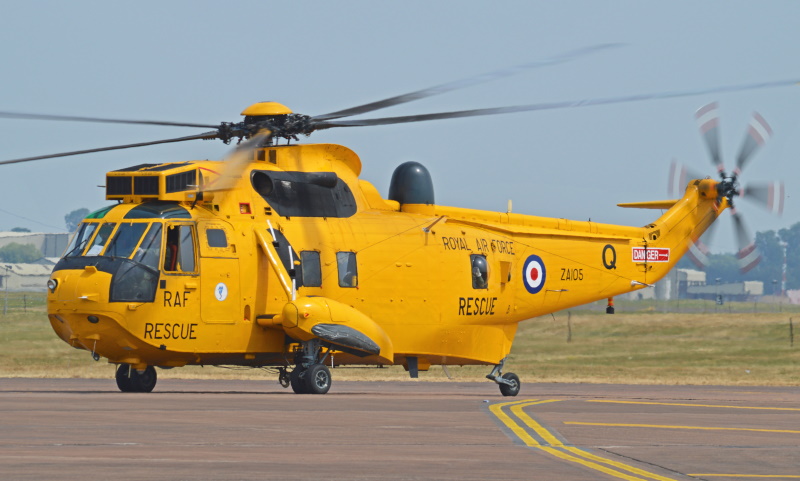
19 HAR.3s were obtained; six were later updated with an NVG-compatible cockpit, GPS receiver, defensive countermeasures, and other updated kit. Six new "HAR.3A" machines were obtained in the 1990s to replace the last of the Wessexes to be retired. These were the only Sea Kings obtained directly by the RAF. The RAF HAR machines were typically painted in overall yellow colors.
* The "HC.4" -- "Helicopter, Cargo Mark 4" -- was a "Commando" assault transport, which was a slightly different breed from the HAS / HAR variants, and originally developed for sale to Egypt and Qatar, as discussed later. The Commandos were easily distinguished by fixed forward landing gear, without sponsons, much like that of the civilian S-61L; they did have disk-type inflatable flotation packs. Although British armed services had snubbed the Commando early on, in 1978, the Admiralty asked Westland for a replacement for aging Wessexes, with the first "Sea King Helicopter Cargo (HC) Mark 4" -- Commandos were still designated as Sea Kings -- performing its initial flight on 26 September 1979, and initial service deliveries late in that year.
The HC.4 had Gnome 1400-1 engines with folding composite main rotor blades -- developed under the "British Experimental Rotor Program (BERP)" -- and a folding tailboom. It retained the metal six-bladed rotor, and had seats for 28 troops; it appears a rescue winch was standard fit, some of the HC.4s being used in the SAR role. They had no radar.
42 HC.4 Commandos were obtained by the Royal Navy, with deliveries from 1979. It appears that their typical colors were overall olive drab, though they sported olive drab / white disruptive camouflage for Norwegian operations. Two more machines to a generally similar spec, but not kitted up for operational service, were used for trials as the "Sea King Mark 4X", at least sometimes being painted in bright white / dark blue / red "raspberry ripple" colors.
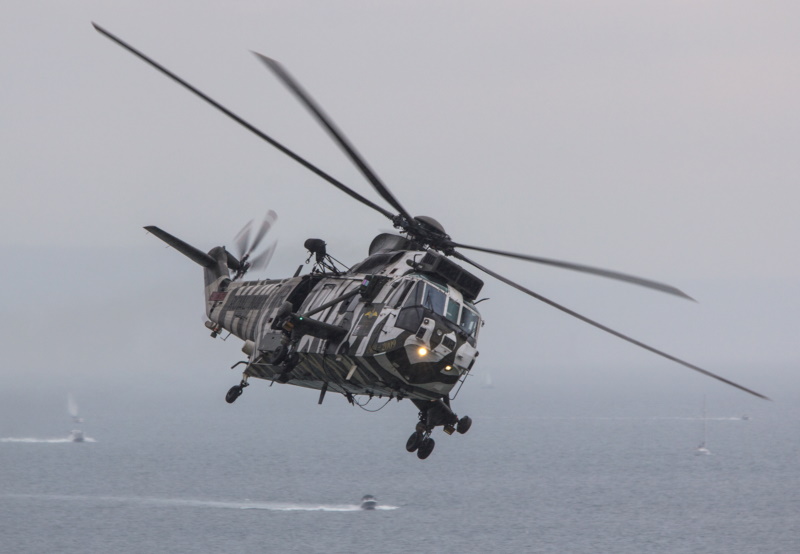
The HC.4s saw plenty of operational service, starting with the 1982 Falklands War. For the 1990:1991 First Gulf War, HC.4s committed to action were given considerable enhancements, including an NVG-compatible cockpit, GPS navigation, defensive countermeasures, and a door-mounted 7.62-millimeter GPMG machine gun. They were painted overall desert pink for the conflict. During the Balkan Wars of the 1990s, HC.4s committed to service got more updated kit, including an infrared searchlight, armored crew seats, and (in some cases) kevlar floor armor.
The Sea King HC.4's operational swan song was action in Afghanistan during the next decade, being used in support of international forces attempting, with mixed success, to keep the peace there. They were withdrawn in 2011, returning to the UK, to be replaced by the Leonardo EW101 / Merlin HC.3.
* Moving on in the sequence, the "HAS.5" was an improved HAS.2 -- a HAS.2 being used as the HAS.5 prototype, performing its initial flight in its new configuration on 1 August 1980. The HAS.5 featured:,
Some HAS.5s were later kitted up to carry AN/ASQ-81 MAD gear, with sponsons for MAD support obtained directly from Sikorsky. 30 HAS.5s were built new, and there were 55 conversions to HAS.5 standard -- most from HAS.2s, but also from a few HAS.1s that hadn't undergone conversion to HAS.2 spec. Some HAS.2s that weren't upgraded to HAS.5 spec were modified into variants for other roles, more on that later.
The HAS.5 saw action in the 1982 Falklands conflict, and also in the First Gulf War in 1991:1992. During the Gulf War, the HAS.5 was used for utility, patrol, and mine countermeasures. The machines committed to combat operations had their sonar yanked, to then be fitted with defensive countermeasures; a FLIR turret alongside the nose; and a door-mounted 7.62-millimeter (0.30 caliber) GPMG machine gun.
After being phased out of service in the ASW role, a number of HAS.5 machines were converted to a SAR configuration by stripping out ASW gear, though the Super Searcher radar and Orange Crop ESM were retained. A rescue winch was standard kit, with these machines being redesignated "HAR.5"; they retained overall blue-grey colors, except for the nose and tailboom being painted red. HAS.5 machines stripped down for utility service were similarly redesignated "HU.5".
* The HAS.5 was followed by the "HAS.6", with improvements including Orange Reaper ESM to replace the Orange Crop, and the dunking depth of the sonar increased from 75 meters (245 feet) to 213 meters (700 feet). It also had other modernized avionics and composite BERP main rotor blades. The reduced weight of the modernized systems carried by the HAS.6 increased on-station endurance by a half-hour. Five HAS.6 were built new, the number of HAS.5s upgraded to HAS.6 spec being given as at least 73.
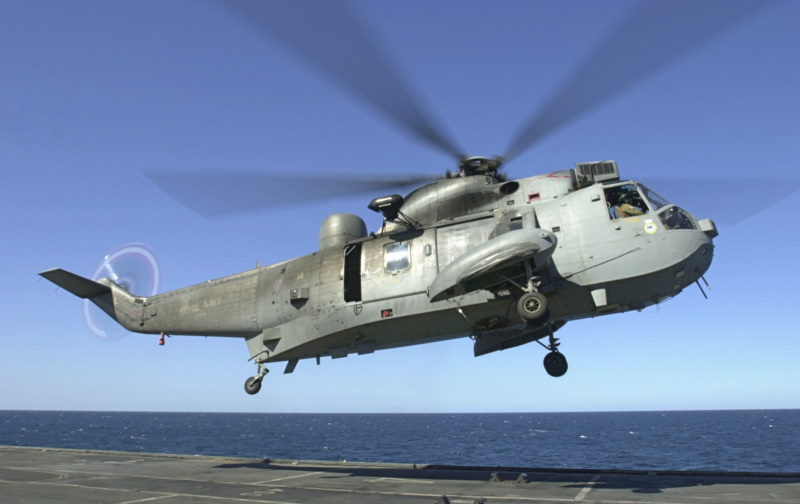
The Royal Navy's Sea Kings were retired from the ASW role in 2003, having been replaced by the Leonardo AW101 / Merlin HM.1). Some HAS.6 machines were stripped down for the utility role, being redesignated "HAS.6(CR)", instead of the less obscure "HU.6". All British Sea Kings in the utility role were retired by 2010; all in the SAR role were retired by 2016.
Norway obtained three retired HAR.3s in 2015, with Belgium obtaining one HAR.3 in parallel; the machines were used as spares hulks. Seven retired British Sea Kings of various marks were passed on to Pakistan from 2017, with some to be used as spares hulks. The Pakistanis were already Sea King operators. In 2023, three retired British Sea Kings -- variants not mentioned -- were handed off to Ukraine for utility use against the Russian invaders. There was a certain pleasant irony in that, since Igor Sikorsky was from Kyiv, and in fact Kyiv Polytechnic University is now known as Igor Sikorsky Polytechnic.
BACK_TO_TOP* The Falklands War in 1982 meant the Royal Navy had an urgent requirement for a carrier-based "airborne early warning (AEW)" asset; the service no longer had any carriers that could handle conventional-takeoff fixed-wing aircraft, just the Sea Harrier "jump-jet" fighter and rotorcraft, meaning that a helicopter would have to take up AEW duties.
That led to the conversion of two HAS.2 machines to "AEW.2A" configuration, featuring Thorn-EMI ARI 5930/3 Searchwater radar -- a variant of the radar carried by the RAF's Nimrod maritime patrol aircraft -- in an inflatable radome with a kevlar skin, mounted on a swivel arm on the rear right fuselage that could pivot down for observations, and back up again for landings. They retained the ARI 5995 search radar, but of course sonar was deleted. They were also given an IFF interrogator and Orange Crop ESM. Of course, the radomes cut into performance, but since the AEW.2As were to provide warning for a naval task force, they didn't have to go anywhere in a hurry.
Work began in May 1982, with the conversions finished in haste, leading to deployment on the HMS ILLUSTRIOUS in August. The conflict had ended in June, but the ILLUSTRIOUS was still on-station in the area. The two rushed AEW.2A conversions proved satisfactory, and so seven more conversions were ordered, with the two original machines also brought up to full spec.
The AEW machines operated with a pilot and two operators; since the inflatable antenna radomes were known as "bags", the crews became known as "baggers" or "bagmen". Four more Sea King HAS.2 helicopters were later converted to an "AEW.5" standard featuring modernized avionics, with the others updated to the same configuration, giving a fleet of 13 modernized AEW Sea Kings. Photos show that the AEW Sea Kings were given overall light blue-gray color schemes.
* However, the ARI 5930/3 Searchwater radar left something to be desired, in particular suffering badly from surface radar reflections or "clutter" -- the helicopters could not fly high enough to keep it out of the picture. In the early 1990s, Project CERERBRUS was set up to consider improvement, leading to award of a contract to Thales in 1997 to update the AEW Sea Kings with a modernized radar.
The new radar, the Searchwater 2000AEW X-band radar, was substantially lighter than the old radar but had three times more transmitting power, giving it greater range and discrimination; it could deal with surface clutter, and could track both air and surface targets. The old grayscale radar displays were replaced by color displays, with a touchscreen interface and a processor system that allowed the simultaneous tracking of hundreds of targets.
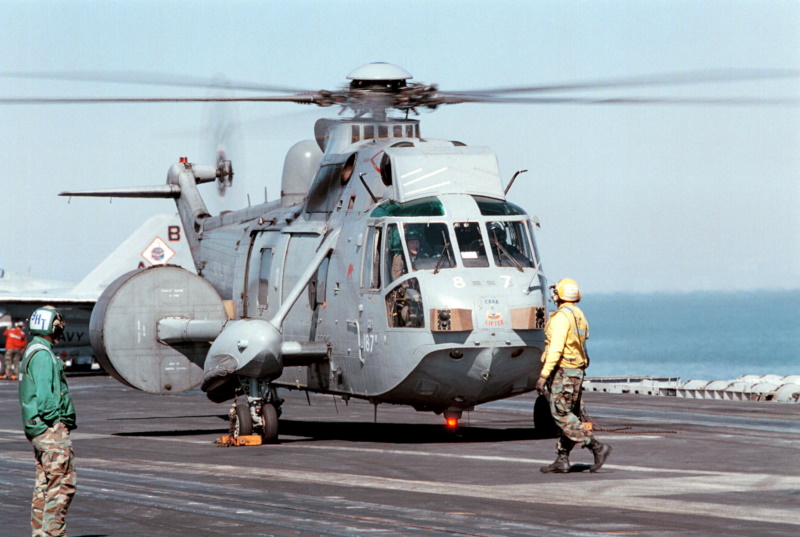
Communications systems were also modernized, most notably with a datalink system that permitted integration of target data from other sources into the Sea King's operator displays. One of the operator controls was labeled "WTFGO", for "Weapon Target Fighter Global Overview"; the operator could press it to get a map of datalinks to fighters and intercept vectors of the fighters to the targets. Operators quickly redubbed it the "What The Fuck is Going On" button. The Orange Crop ESM was not updated to modern spec, however, and was not integrated into the system.
The updated helicopters were named "Sea King Air Surveillance and Control (ASaC.7)", with conversions performed from 2002 to 2004. Two were lost -- ironically, both the initial two AEW conversions -- in a mid-air collision in the dark in 2003. They served in the Second Gulf War, being used as battlefield surveillance and control assets. The ASaC.7 machines were retired in 2018, being replaced with Leonardo Merlin AW101 / HM.2 with the podded Crowsnest radar system. Seven of them were passed on to Helioperations of the UK for use in the SAR role, serving alongside 6 HU.5s and 5 HAR.3s.
BACK_TO_TOP* Westland, as noted, enjoyed a lively export business with their Sea Kings. The first export customer was West Germany, which ordered 22 "Sea King Mark 41" machines for SAR, with first flight in 1972, and deliveries in 1973:1974. A replacement machine was delivered in 1975.
The German Sea Kings were derived from the RN Sea King HAS.1, featuring Gnome 1400 engines and a six-bladed metal tail rotor. They had MEL ARI 5995 radar in a dorsal radome, though they lacked ASW gear, and had a rescue winch. They introduced the expanded cabin -- thanks to the rear bulkhead being moved back -- expanded fuel supply, rear bubble windows, and two windows on the left of the SAR Sea King variants. Some of the avionics were of German origin. Typical colors were overall light green / olive drab disruptive camouflage, though some committed to the SAR mission added an orange nose, tailfin, engine cowlings, plus a broad orange band on forward tailboom.
From 1986, Messerschmitt-Boelkow-Bohm updated 20 of the Mark 41s to a surface warfare configuration, carrying four BAE Sea Skua light antiship missiles -- one attached outboard of the sponson on each side, one on the corner of the fuselage inboard of the sponson on each side. They were fitted with Ferranti Seaspray targeting radar, in a "chicklet" radome on the left side of the nose, along with a datalink to control the missiles, and also had a defensive countermeasures system. The chicklet radome was an instant recognition feature for the German Sea Kings.
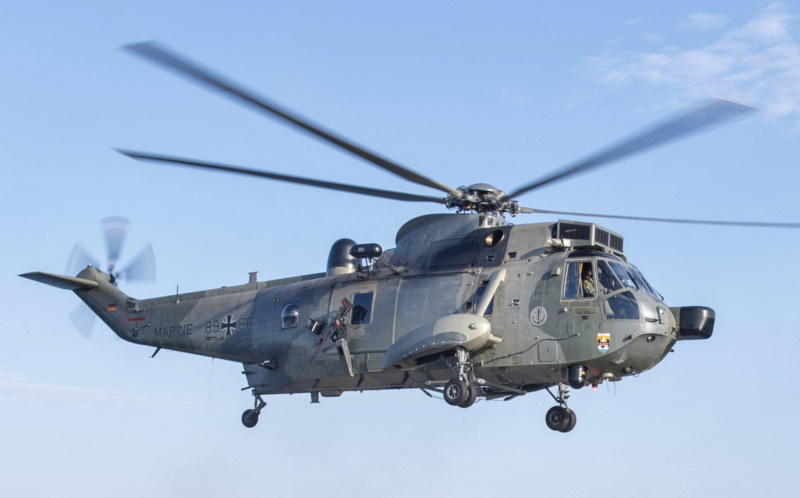
The German Sea Kings were updated in service with other modernized avionics, including GPS receivers and an imaging turret. The German Sea Kings have been replaced by the NH Industries NH90 Sea Lion, which entered service in 2019. Six of the retired Sea Kings were provided to Ukraine, for use in the war with the Russians.
* The Indian Navy proved an enthusiastic user of the Sea King, ordering six "Mark 42" machines in 1969, with deliveries in 1971, with six more obtained by 1974, for a total of 12. The Mark 42s were very similar to the HAS.1, though they had an improved cabin ventilation system, plus differences in communications avionics. Three replacements were ordered in 1977 and delivered in 1980; they were "Mark 42A" machines, like the HAS.2, with Gnome H1400-1 engines.
Twelve "Advanced Sea King Mark 42B" machines were ordered in 1983, with the Indian Navy then exercising an option for eight more, for a total of 20. Another machine was built, but lost in a crash before delivery to India. Deliveries were in 1989 and 1990. The "Advanced" effectively meant they had uprated Gnome H1400-1T engines with 1,240 kW (1,660 SHP), plus the BERP composite rotor blades, and a new five-blade composite tail rotor. They could also carry a BAE Systems Sea Eagle antiship missile on each side of the rear fuselage. The Mark 42Bs had the MEL Super Searcher radar in the drum radome, though they also had different kit from other ASW Sea Kings, including Alcatel HS-12 dipping sonar and a Marconi Hermes ESM.
Along with the Mark 42Bs, the Indian Navy also obtained six "Mark 42C" machines for SAR and utility transport. While some sources have described them as "Commandos", they had the main gear sponsons and no additional windows. They had Bendix RDR 1400C radar in a nose thimble, with no radar mounted on the spine; they had the composite main and tail rotors, but it seems they retained the Gnome H1400-1 engines.
Early on, Indian Sea Kings were painted dark blue except for white top decking; later on, they were given overall light blue-green colors. Total deliveries of Westland Sea Kings to the Indian Navy were 12 + 3 + 20 + 6 == 39. They remain in service, but the fleet is beneath half strength, and they need to be replaced. Efforts to do so haven't gone well, an effort to replace them with Sikorsky S-70B Sea Hawks having collapsed after over-extended wrangling between the Indian government and Sikorsky.
* Norway was another early user of the Westland Sea King, ordering ten "Mark 43" machines, with deliveries in 1972:1973. They were SAR machines, generally similar to the German Mark 41 SAR machines, but with some minor changes in avionics. They traditionally flew in orange-and-white "creamsicle" colors. A single "Mark 43A" was obtained in 1978 as a replacement, being much the same as the Mark 43s but with the uprated transmission and six-blade tail rotor of the HAS.2.
In the early 1990s, all survivors were upgraded to "Mark 43B" standard by Westland. They featured Sea Searcher radar in a drum radome on the spine, plus Bendix weather radar in a thimble radome offset to the left on the nose, and an infrared imager turret under the nose. The rest of the avionics were generally modernized. As noted earlier, the Norwegians obtained three ex-RN HAS.6 machines as spares hulks in 2013. The Norwegian SAR Sea Kings have now been replaced by the Leonardo AW101.
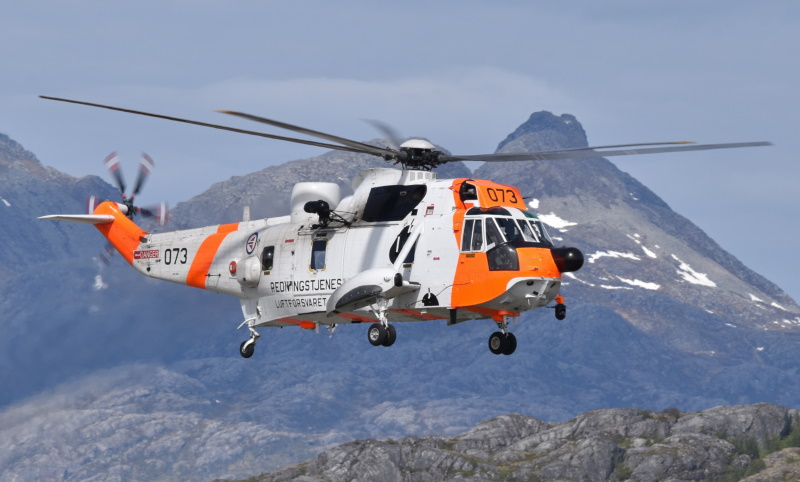
* Pakistan bought six ASW Sea Kings in 1972, these machines being designated "Mark 45" -- the Mark 44 designation was skipped, since that was the designation of a homing torpedo in common use. The Mark 45s were very much like the Royal Navy HAS.1, with similar avionics; five were kitted up to carry two Exocet antiship missiles. They were delivered from 1975 into 1977.
One Mark 45 was lost in a crash in 1986, with the Pakistanis obtaining an ex-Royal Navy HAS.5 as a replacement; it is unclear if it was modified in any significant way before being handed on to Pakistan. They flew in overall dark blue colors. As noted earlier, the Pakstanis are still flying their Sea Kings, and obtained seven ex-UK machines in 2017, some as spares hulks.
* Saudi Arabia ordered six ASW Sea Kings for Egypt in 1974, these machines being designated "Mark 47" -- the Mark 46 designation was skipped because it was the designation of another homing torpedo in common use. The Mark 47s were delivered in 1976. They were very similar to the Royal Navy HAS.2, except that they had the older Plessey Type 195M sonar; they were also fitted with a rescue winch to support the SAR role. They did not have intake filters, being operated over water with little concern for sand, and no concern for ice. It is unclear what colors they were painted in. It appears they remain in service.
* Belgium ordered five Sea Kings for SAR in 1974, these "Mark 48" machines being delivered in 1976. They were generally similar to the German Mark 41 SAR machines in terms of airframe -- with the rear bulkhead moved back, bubble windows in the rear, two windows on the left -- and avionics. However, they did have Gnome H1400-1 engines with the uprated gearbox and six-blade tail rotor. Oddly, they were painted in disruptive olive drab / tan disruptive camouflage colors, but with a red nose and tailfin.
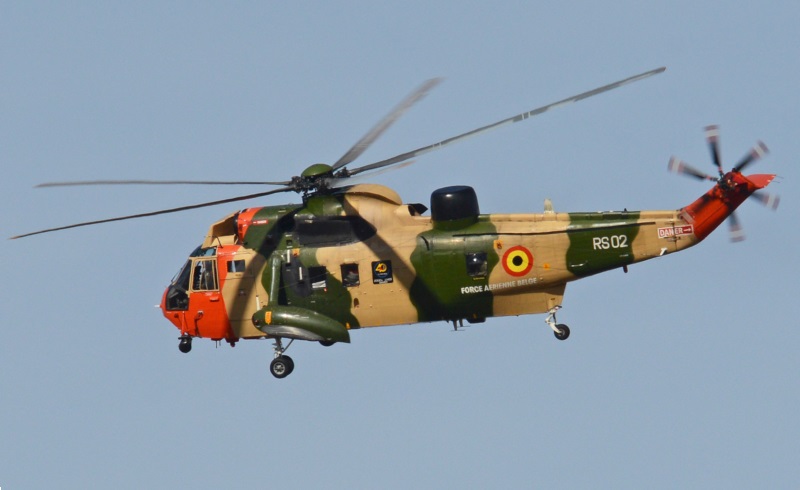
In the mid-1990s, they were given an upgrade very similar to that of the Norwegian Mark 43B, with Sea Searcher and Bendix radars, plus an infrared imaging turret. Sources hint that they were given another upgrade after the turn of the century, mainly for airframe service-life extension, though possibly there were minor avionics updates. As mentioned, the Belgians obtained one HAS.6 in 2013 as a spares hulk. The Belgian Sea Kings were retired from 2013, being replaced by the NH90, with the last of them withdrawn in early 2019.
* The Australians ordered ten Sea Kings in 1972, with deliveries to the Royal Australian Navy (RAN) in 1975:1976. They were "Mark 50" machines, being the first Westland Sea Kings with the Gnome H1400-1 engines, uprated rotor transmission, and six-blade tail rotor. As such, they were similar to the Royal Navy HAS.2, the big difference being Americanized avionics -- most notably Bendix AN/ASQ-13A dipping sonar, which had a dropline about 150 meters (500 feet) long, or about 30 meters (100 feet) longer than the Plessey sonar of the HAS.2. Americanized avionics were specified to simplify logistics, some of the same kit being used on Aussie Lockheed P-3C Orion sub-hunter aircraft. The Mark 50s retained the MEL ARI 5995 search radar in the beehive dorsal radome.
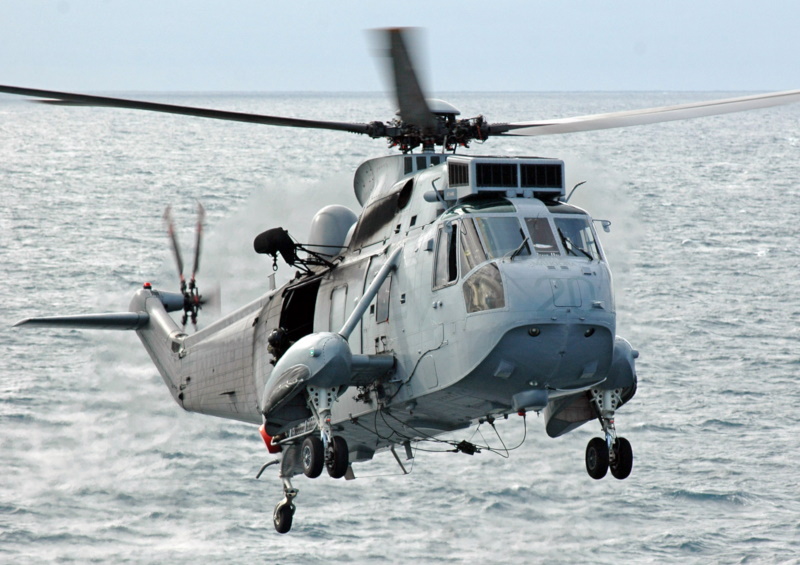
Two "Mark 50A" replacement machines were ordered by the RAN in 1981, with deliveries in 1982. They were much like the Mark 50s, the only significant difference being expanded cabin space from moving the rear bulkhead back. They were traditionally painted all white, though it appears they went to overall light gray late in their careers. The Mark 50/50As were withdrawn from the ASW role when the RAN obtained Sikorsky S-70B Sea Hawks for the ASW role, surviving Sea Kings being used in the utility / SAR role. The Sea Kings were finally withdrawn from service in 2011, being replaced by the NH90.
* In 1972, Westland began investigation of a troop transport version of the Sea King, to be named the "Commando", intended primarily for ground force instead of maritime operations. The focus was to be on export sales -- the British Army had acquired the Aerospatiale Puma and was planning to acquire the Boeing-Vertol Chinook, and so had no perceived need for a Sea King-based troop carrier. Westland did pitch the concept to the British Army, but it was the Egyptian government that was the initial customer, ordering an initial batch of "Commando Mark 1" machines -- AKA "Sea King Mark 70", though that designation was little used.
The Commando Mark 1 was just a fast-track modification of the Sea King HAS.1 as a troop carrier, being fitted with the baseline Gnome H.1400 engines, the folding main rotor, the five-blade tail rotor, plus sponsons, with all the ASW gear being yanked. The Commando Mark 1 borrowed from the Sea King HAR.3 in featuring the larger cabin, with the bulkhead moved back; more fuel tankage; and the bubble windows on the rear of the fuselage. Initial flight of the Commando Mark 1 was on 12 September 1973, with five machines being delivered to Egypt from January 1974.
The Mark 1 was followed by the "Commando Mark 2" AKA "Sea King Mark 72", which was the machine Westland really wanted to build. The Mark 2 improved on the Mark 1 by fitting Gnome 1400-1 engines and the six-bladed tail rotor, while reducing weight by eliminating rotor folding and adding fixed landing gear in the place of the Sea King sponsons. The primary goal was to improve "hot & high" performance, with a focus on Middle Eastern sales.
As before, external stores could be carried on the strut between the landing gear and the fuselage -- but could also be carried on a hardpoint outboard of the landing gear. External stores envisioned included external fuel tanks, machine-gun or cannon pods, unguided rocket pods, bombs, or guided missiles; in reality, the Commando rarely, if ever, carried such stores. Inflatable flotation gear was fitted in a disk-shaped package outboard of each main gear support frame.
Westland considered an inflatable seating scheme for 28 seats -- not only would the inflatable seats be lighter, but they would also provide buoyancy for ditching at sea. However, customers were not enthusiastic about the idea, preferring canvas seats for 28, or 34 in a high-density configuration. Nine stretchers, in triple stacks, along with seats for medics or walking wounded were an alternative arrangement.
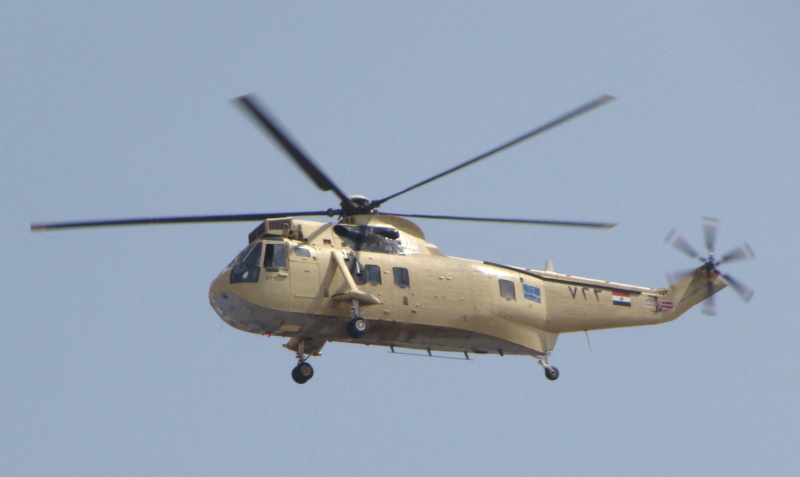
Egypt obtained 17 Commando Mark 2s, plus two "Commando Mark 2B" VIP transports -- with a luxury interior, including toilet and galley; plus two additional windows, for a total of four, on the left side; and one additional window, for a total of three, on the right. They were fitted with box engine-intake sand filters. Initial flight of the prototype was on 16 January 1975, with initial deliveries following later in the year, and being completed in 1976. It appears these machines were bought with Saudi funds.
In addition, Egypt obtained four "Commando Mark 2E" electronic warfare (EW) machines, fitted with the Italian-made Selenia / Elettronica IHS-6 integrated EW system, with prominent antenna domes on the spine and rear fuselage. The IHS-6 had both ESM and countermeasures / jamming capability. Initial flight of the first was in 1978, but deliveries were not until 1980. The Egyptian Commandos were typically painted in overall sand. It appears the Egyptian Commandos linger in service.
* Qatar also decided to obtain the Commando, obtaining three "Commando Mark 2A" transport helicopters, essentially the same as the Mark 2, and a single "Commando Mark 2C" VIP transport, essentially the same as the Mark 2B. They both had the alternate designation of "Sea King Mark 92", and were delivered in 1975:1976.
From 1982, Qatar obtained eight "Commando Mark 3" machines, AKA "Sea King Mark 74", the last being delivered in 1984, to be used in the utility and anti-surface vessel (ASV) roles. They were hybrids, with Sea King-style sponsons -- if fitted with the disk-type flotation gear packs of the Commando -- and a folding tail boom, but had the stretched cabin and greater fuel supply of the Commando.
They featured Gnome H.1400-1T turboshafts, driving a BERP composite main rotor, though they did not adopt the updated five-blade composite tail rotor; they had ARI 5995 search radar in a dorsal radome, and could carry two Exocet antiship missiles. They could also carry machine gun / cannon pods and unguided rocket pods as alternative stores. Color schemes are unclear, photos suggesting that at least some were in light green / medium green disruptive camouflage. The Qatari Commandos have been phased out, being replaced by the NH90.
BACK_TO_TOP* The following list outlines Sea King variants and production, generally skipping one-off trials conversions. Sikorsky-built Sea Kings for the US Navy included:
Sikorsky-built civil Sea Kings included:
Sikorsky-built export Sea Kings, and license-built Sea Kings, included:
S-61R variants included:
Westland-built Sea Kings for British service included:
* Westland Sea Kings for export service included:
* Westland Commando variants, most with fixed landing gear, included:
* As minor comments, Sikorsky used the S-61 dynamic system with the S-67 Blackhawk gunship demonstrator, which didn't enter production, despite an extensive evaluation and promotion. At least one S-61 was faked up as a Mil Mi-24 "Hind" gunship for the movies; there may have been other such modifications for training purposes.
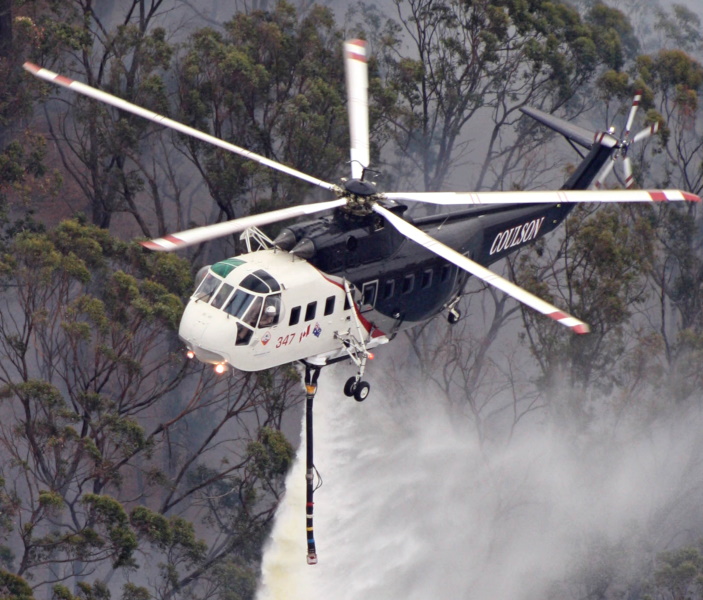
* Sources include:
* Illustration credits:
* Revision history:
v1.0.0 / 01 nov 17 v1.2.0 / 01 dec 20 / Illustrations update, general update. v1.2.1 / 01 aug 22 / Review & polish. v1.2.2 / 01 may 24 / Review & polish.BACK_TO_TOP
